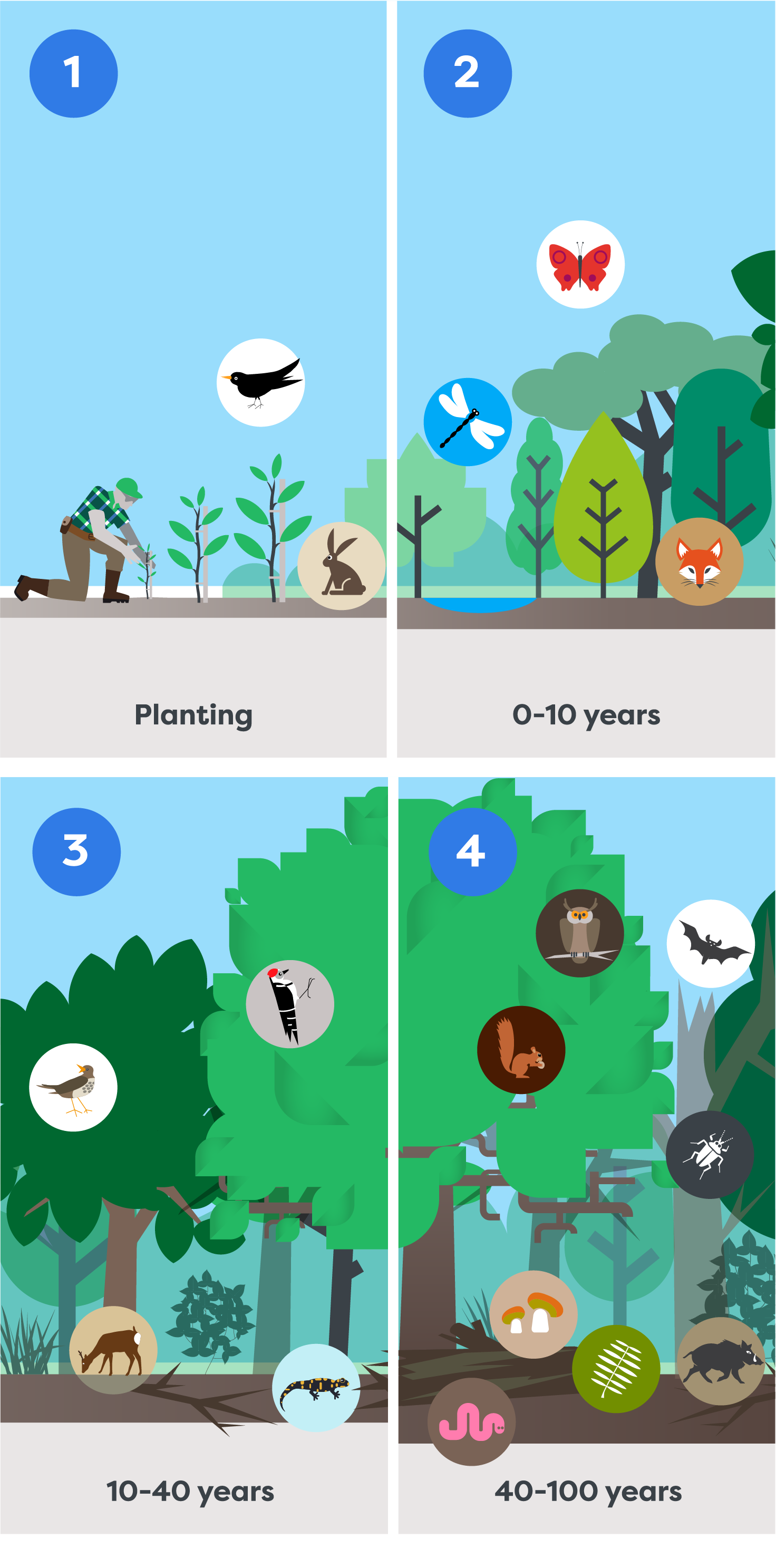Reutum has gained over 16,000 trees: results for 2022-2023
28 September 2023
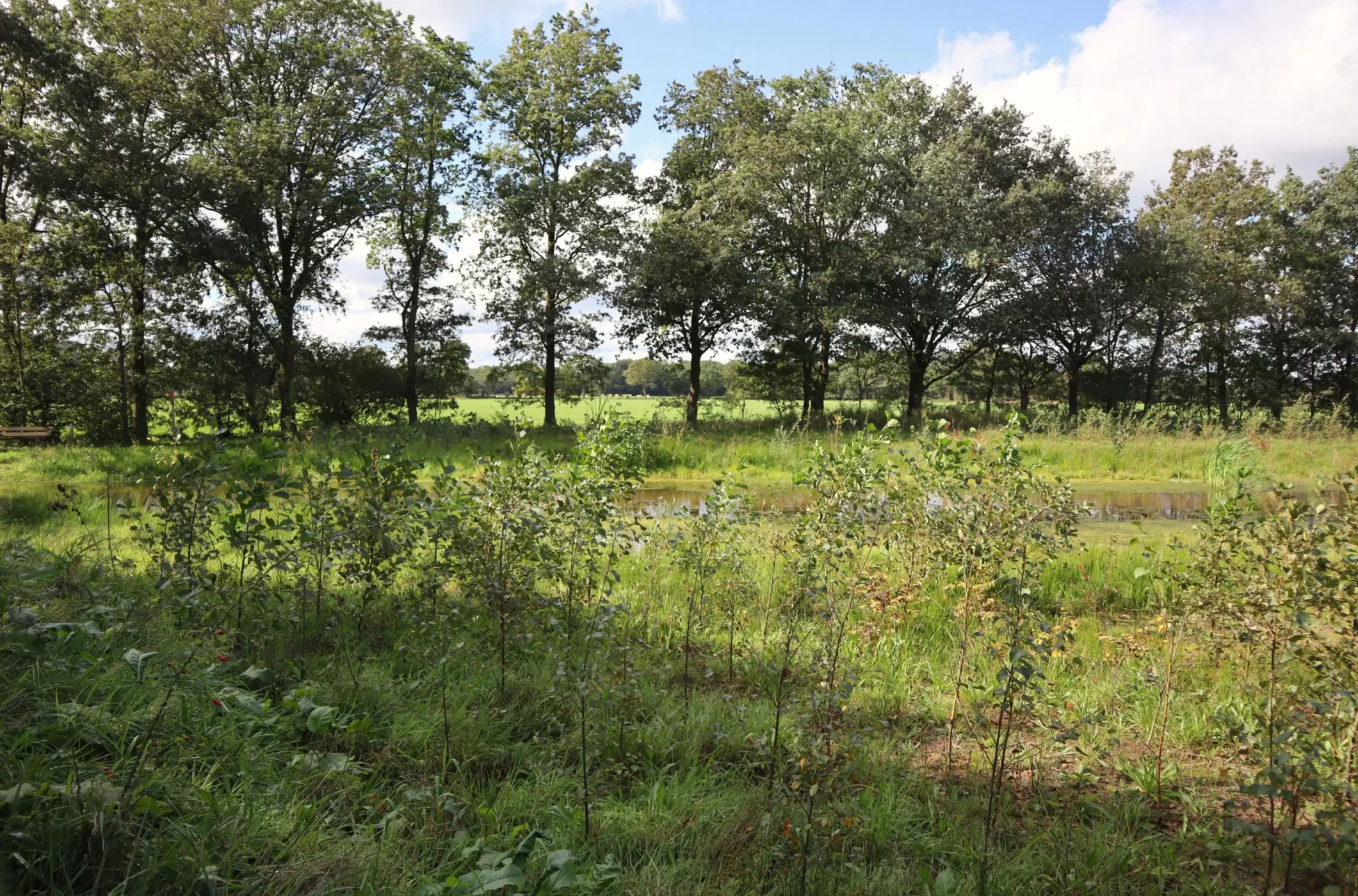
28 September 2023
During the winter of 2022-2023, we collaborated with Staatsbosbeheer and the Buitenfonds on planting new forests in the Netherlands. In total, the project involved 60,493 trees, spread over more than 14 hectares of land. One of the planting locations was close to the village of Reutum in Overijssel, where 16,733 trees went into the ground. This month, we visited the planting location to see how the trees were doing.
The surroundings of Reutum offer plenty of opportunities to reinforce the existing nature and expand it further. We’ve done so by planting trees on former grasslands that are situated alongside or close to existing forest areas. This means that we fill in the “gaps” in the landscape and ensure unbroken natural areas, which will attract all sorts of plants and wildlife in the future, such as squirrels, tawny owls, deer, pine martens, fire salamanders and woodpeckers.
This project has also contributed to the national Forest Strategy, through which the Dutch government intends to plant a total of 37,000 hectares of new forest in the Netherlands by 2030.
From left to right: the tree planting day in February 2023.
In February, we started planting in Reutum, with the help of some of our corporate forest partners. It was a cold, wet day, but that didn’t spoil the fun. The trees were in the ground in no time! Afterwards, Staatsbosbeheer and the Buitenfonds finished off the planting work at this location and the other two. All in all, 16,733 trees were planted!
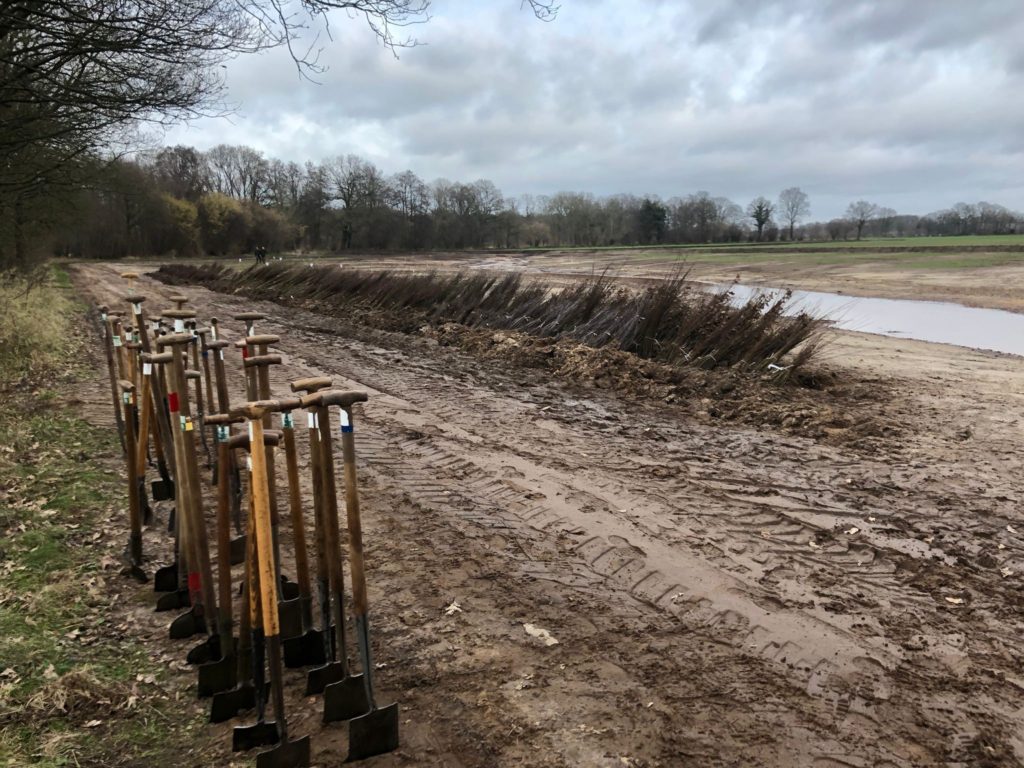
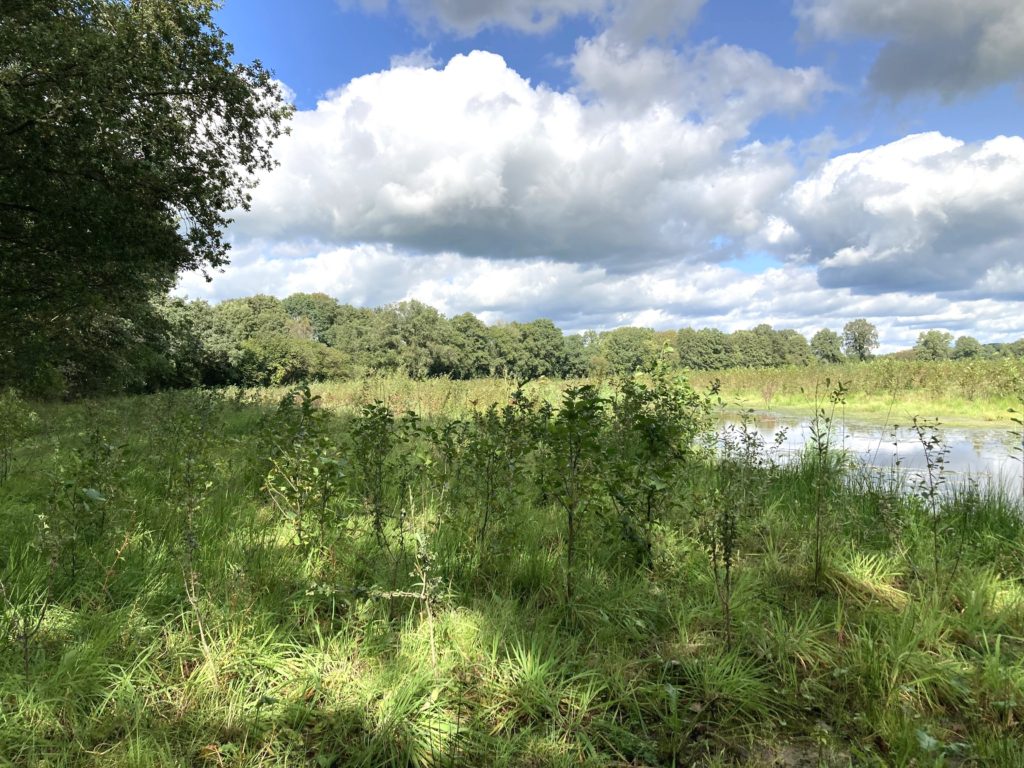
Left is the planting site in early February 2023, right is the planting site during the field visit in late September 2023.
For the planting, we’ve opted for a mix of native tree and shrub species, which naturally belong in the surroundings of Reutum or have been thriving there for years already. They include hornbeam, wild cherry, downy birch, bay willow, common osier willow and dog rose.
A mixed forest like this has many advantages. For instance, a varied forest is more resistant to the consequences of climate change, such as drought, disease and pests. If one species gets into difficulties in the future, then the others keep the forest alive. Moreover, a varied forest attracts a variety of species of plants and wildlife, bringing the biodiversity to life.
We monitor and evaluate all our projects with care. We’re involved in our projects for at least ten years. This enables us to support our project partners in monitoring and developing the forest and to give advice where necessary. Our project partners keep us informed through reports. We also monitor the planting ourselves through field visits.
As far as possible, we try to avoid risks like drought, damage by animals and rough growth. You can read more about this in our blog Challenges when planting a forest At the same time, we don’t have total control over every situation. But by being closely involved with our projects and project partners, we can respond quickly and take measures where necessary.
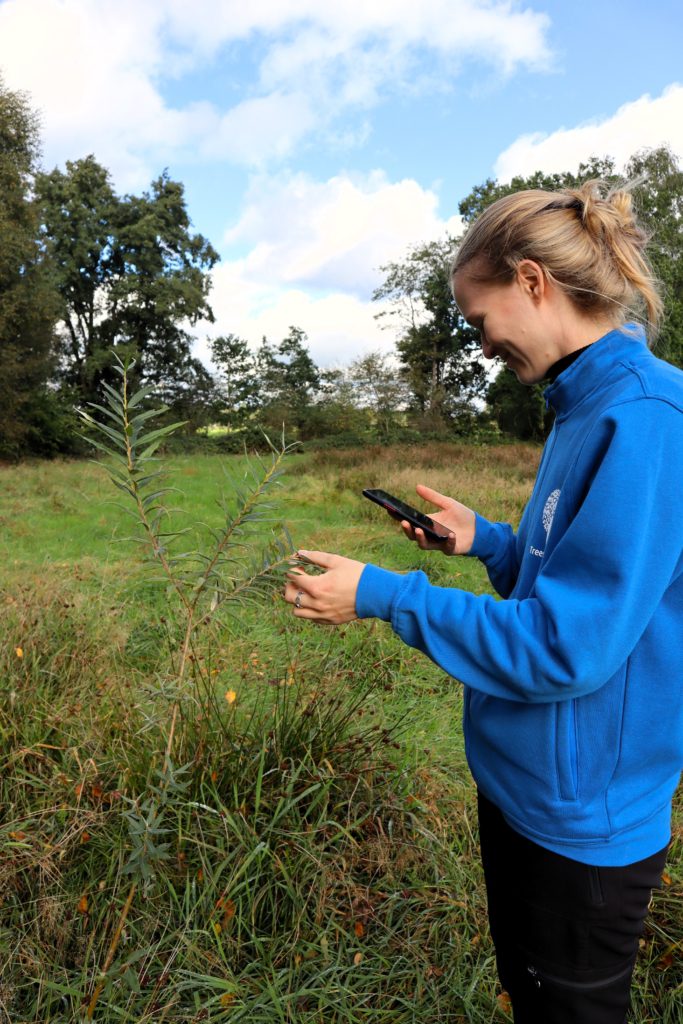
In September, we went on a field visit to Reutum to see how the trees and shrubs were doing. At first, we hardly recognised the location. The bare, sandy plain of February has now made way for a green oasis of grasses and herbs, between which all sorts of young trees are peeping out. So most of the planting has taken hold well!
From left to right: several images of the planting in September 2023.
It seems that the majority of the trees and shrubs haven’t suffered much from the dry weather in the spring, as they’re growing on damp, marshy soil. So our feet got pretty wet during the field visit! Fortunately, these are the perfect growing conditions for the trees and they looked wonderful in their (autumn) foliage.
The damp soil has another advantage, as it provides a special forest ecosystem, which attracts many different types of reptile and amphibian. For that reason, we planted many species that like getting their feet wet, such as downy birch, grey willow and alder. Through this project, therefore, we are also contributing to creating more varied forests in the Netherlands!
In Reutum, the trees grow in a wet, swampy environment: perfect growing conditions!
When planting new forests, it’s normal that not all the trees and shrubs survive. Some of the trees and shrubs in Reutum, for example, suffered rubbing damage from deer. The deer rub their antlers against trees when they have an itch. This can damage the trunks and cause the trees to die.
It’s hard to say at the moment whether all the trees with rubbing damage will be lost. Because even small, young saplings can take a knock or two. On some trunks, we could already see new branches growing at the base! If some of the trees do eventually die, the other trees and shrubs will naturally occupy their space in the future.
We make agreements with our project partners beforehand about the percentage of loss that can be permitted within a project. This percentage is usually between 5% and 15%. If the loss is higher, due to unforeseen circumstances, then new trees are planted in the following planting season. This is also known as refilling. In this way, we ensure together that the forest gets off to a good start!
In the coming years, the planting will develop into a young forest and the biodiversity will keep increasing as well. On this field visit, we already spotted various hares hopping about and insects flying around, like butterflies and dragonflies. In the years to come, the number of plants and animals in this region will increase even further. If you’d like to find out more about this process, read the article How does a forest grow on our website.
